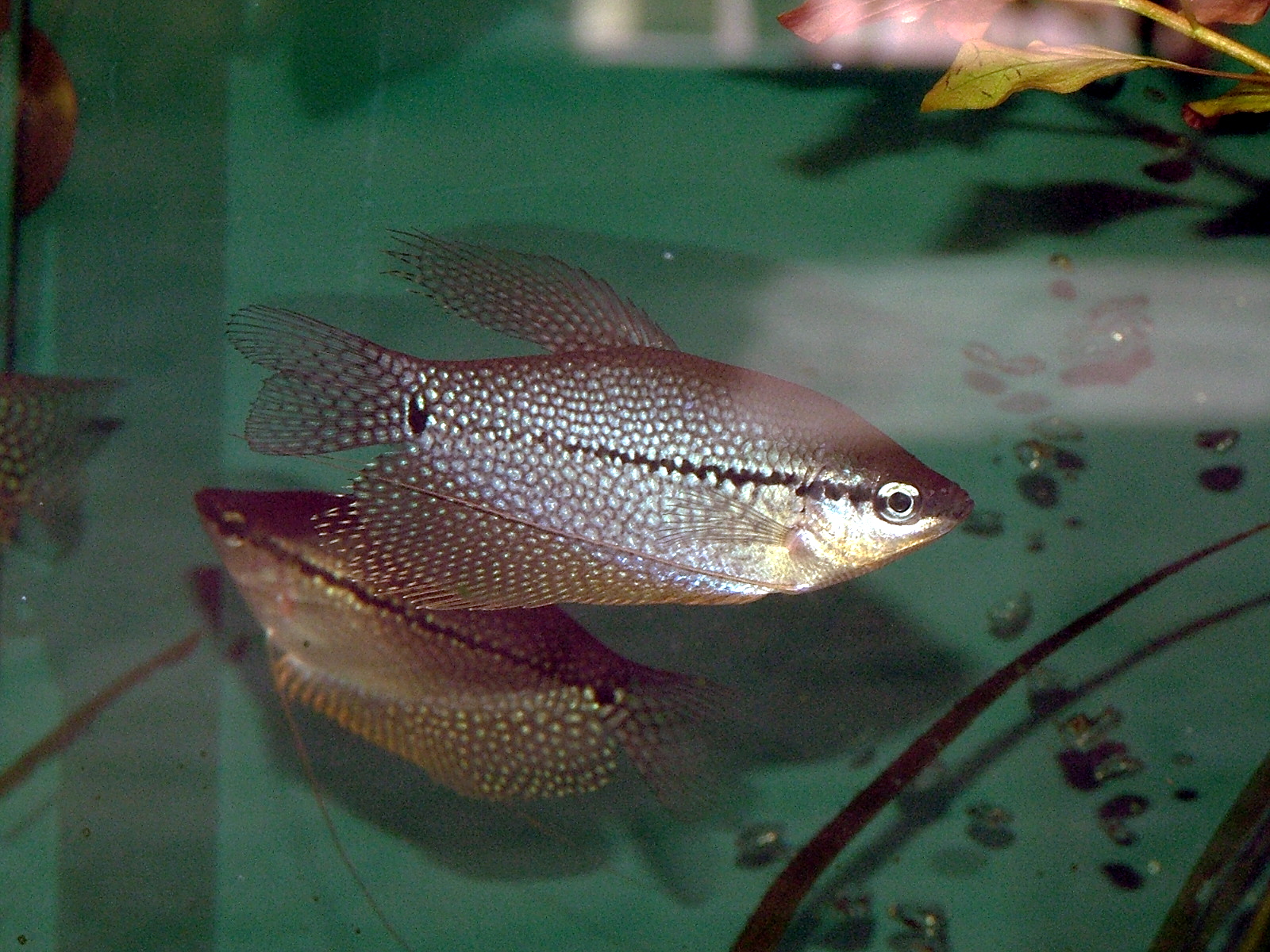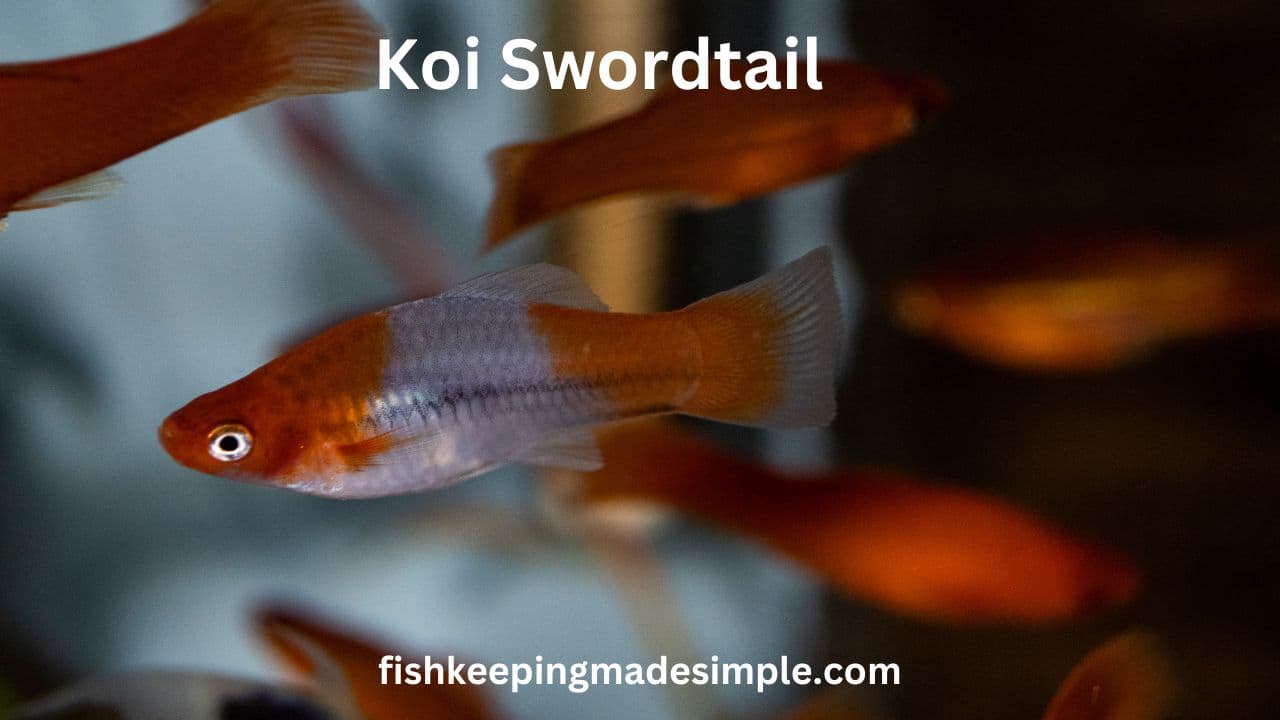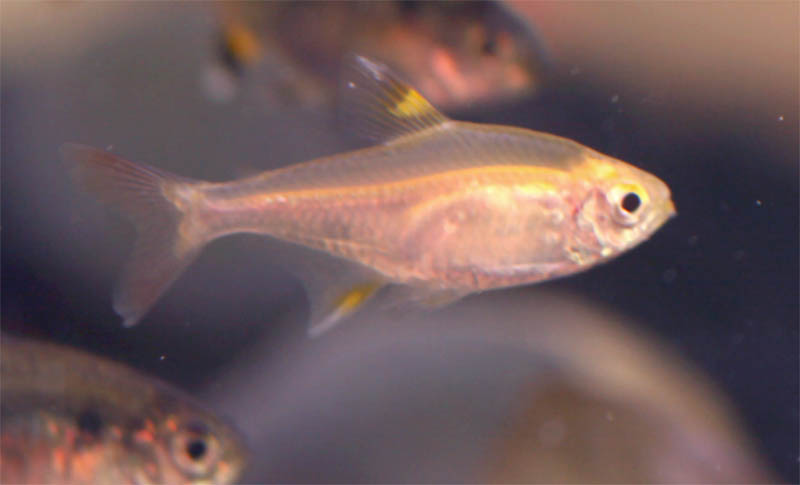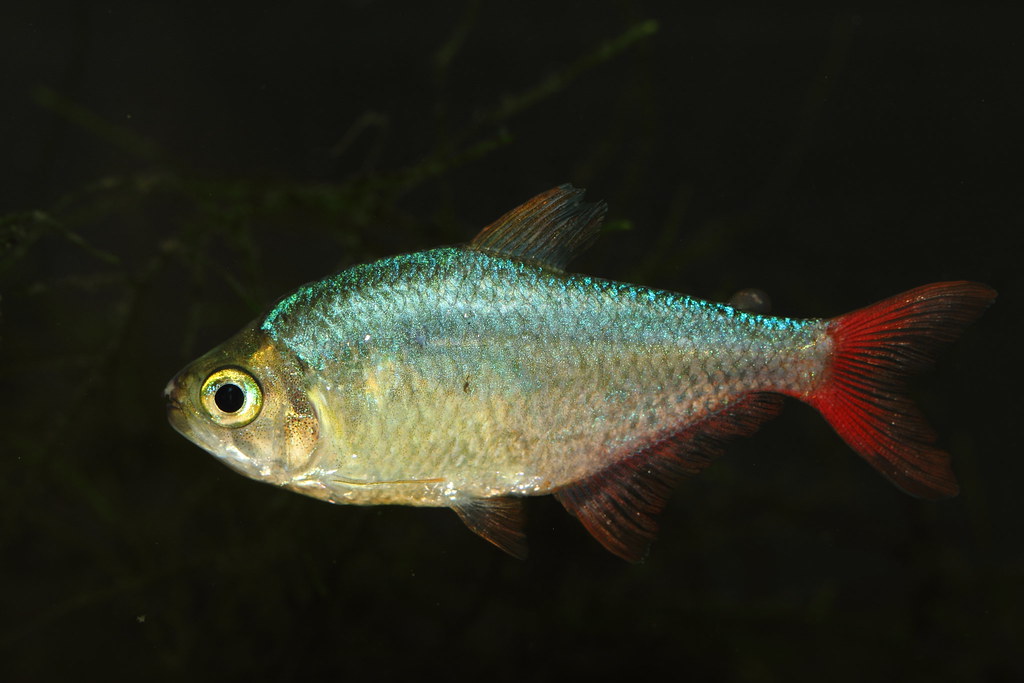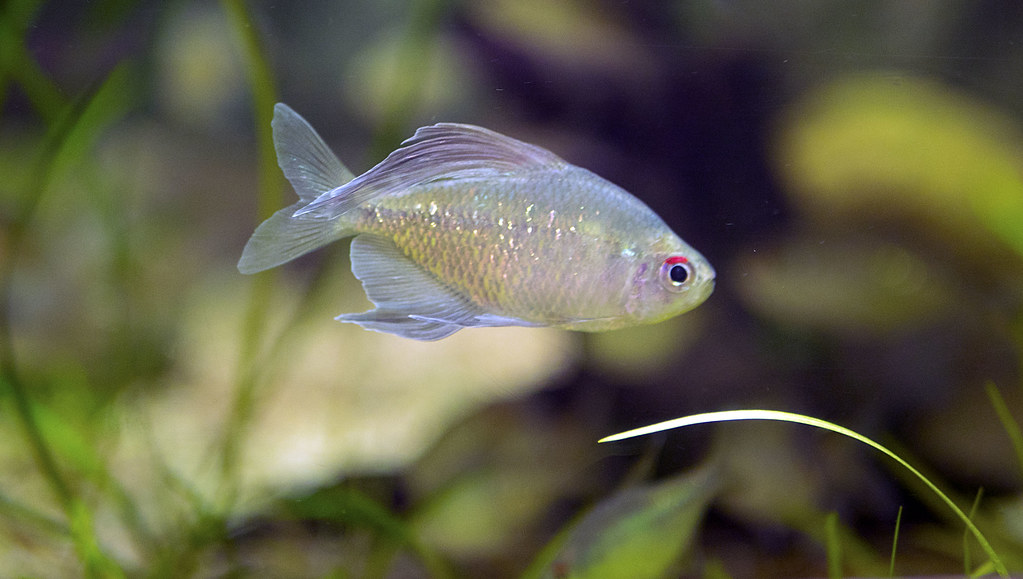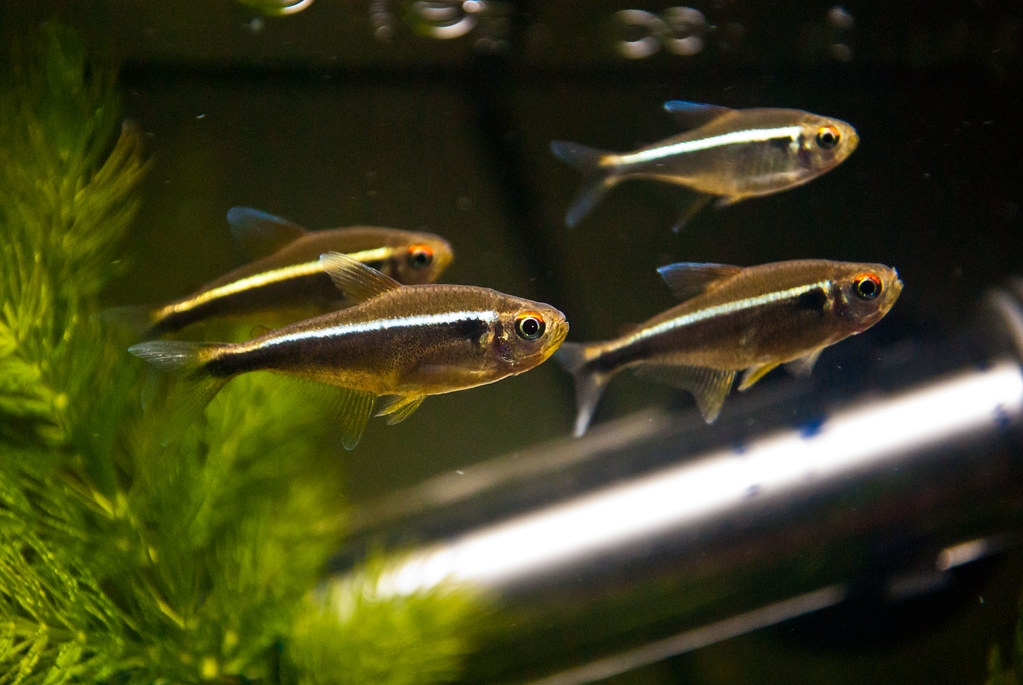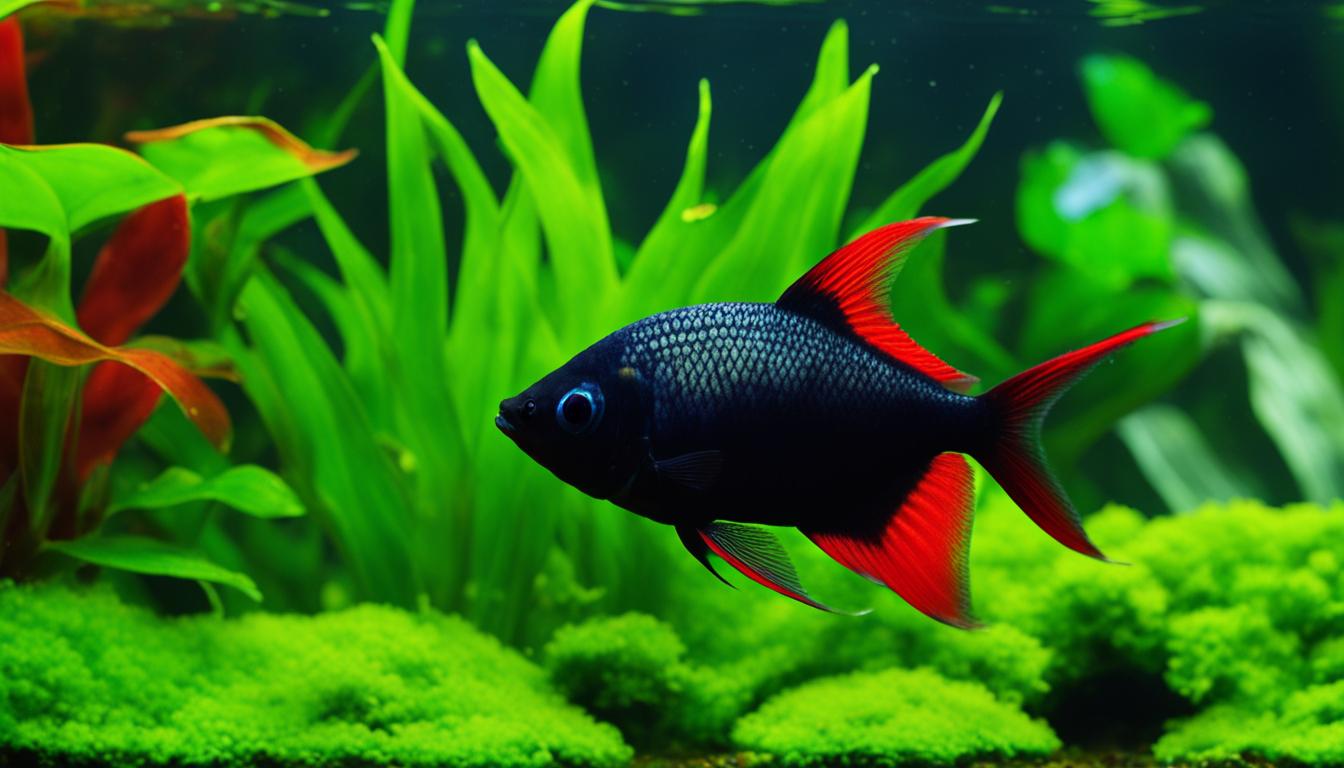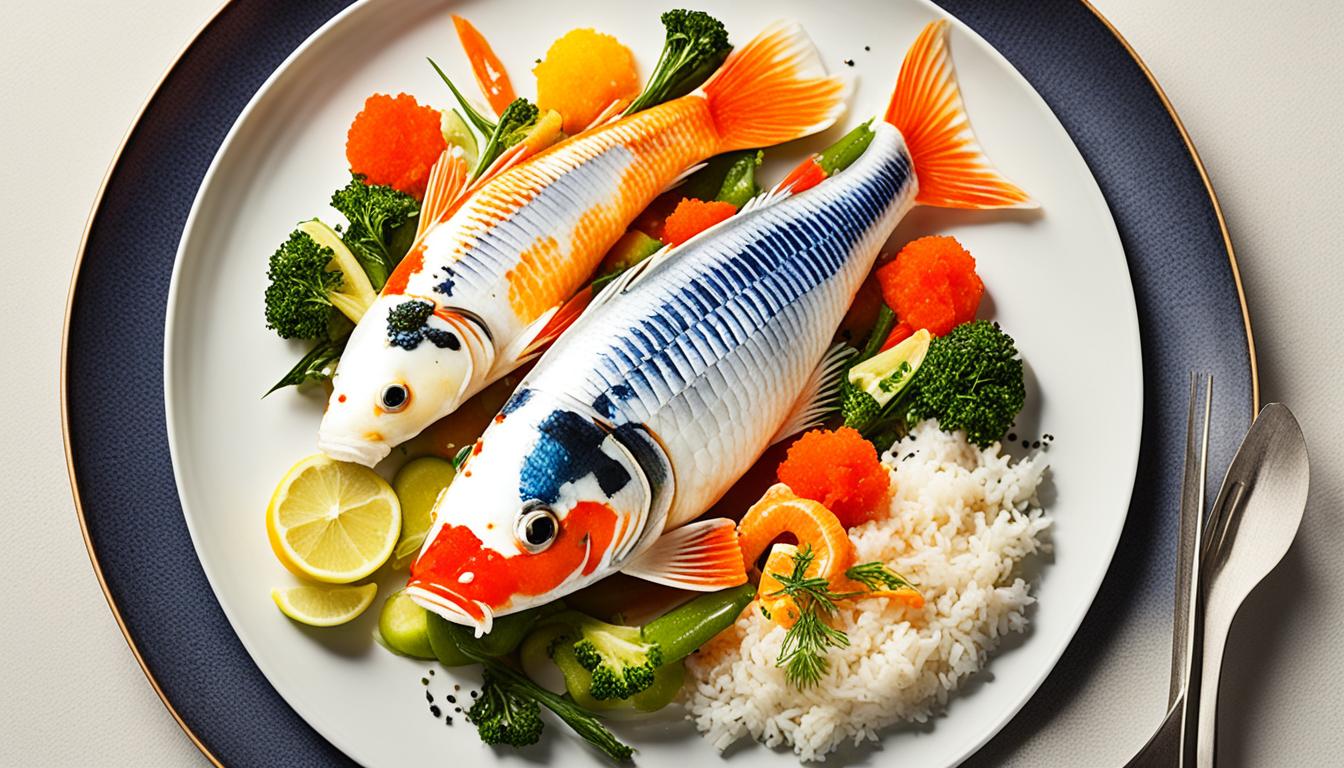Pearl Gouramis are generally peaceful and can be kept in a group of four or more, making them a great addition to a community tank. They are known for their calm temperament and are easy to care for, as they are hardy and adaptable to different tank conditions.
In terms of tank size, a minimum of 30 gallons is recommended for a single Pearl Gourami, but a larger tank is preferable if you plan to keep them in a group. It is important to keep their tank clean by doing regular water changes and maintaining proper water parameters.
Overall, Pearl Gouramis are a beautiful and low-maintenance fish species that can thrive in a well-maintained aquarium.
Table of Contents
Understanding Pearl Gouramis
When caring for Pearl Gouramis, it is recommended to keep them in a group of four or more as they are social animals. They are known to be hardy and easy to care for, making them a popular choice for aquarium enthusiasts.
Overview Of Pearl Gouramis
Pearl Gouramis (Trichopodus leerii) are stunning tropical freshwater fish that have gained popularity among aquarium enthusiasts. They are known for their beautiful pearl-like spots on their bodies, which give them their name. These small but striking fish originate from Southeast Asia and are relatively easy to care for, making them suitable for both beginner and experienced fishkeepers.
Characteristics And Appearance Of Pearl Gouramis
- Size: Pearl Gouramis can grow up to 4 inches in length, making them perfect for smaller aquariums.
- Coloration: They have an iridescent sheen with a silver or gold body and a series of pearly white spots that cover their scales. The spots create a mesmerizing effect as they reflect light.
- Shape: Their bodies are elongated and slightly compressed from the sides, with long, flowing dorsal and anal fins that add to their elegance.
- Labyrinth Organ: Pearl Gouramis possess a unique labyrinth organ, which allows them to breathe air from the surface. This adaptation enables them to survive in oxygen-depleted waters.
Natural Habitat Of Pearl Gouramis
- Origin: Pearl Gouramis are native to slow-moving waters in Southeast Asia, including Thailand, Indonesia, and Malaysia.
- Habitat: They inhabit densely vegetated areas such as marshes, rice fields, and slow-flowing rivers and streams. The dense vegetation provides them with shelter and places to hide.
- Water Conditions: These fish are adapted to warmer climates, so they prefer water temperatures between 77°F and 82°F (25°C and 28°C). They also thrive in slightly acidic to neutral water with a pH level between 6.0 and 7.5.
- Behavior: Pearl Gouramis are peaceful and sociable fish. They often swim in the middle or top levels of the aquarium, occasionally venturing to the bottom to explore.
Remember, providing a suitable habitat that replicates their natural environment is crucial for the health and well-being of your Pearl Gouramis.
Setting Up The Perfect Tank
Setting up the perfect tank for Pearl Gourami care is essential for their well-being. These social fish thrive in a group of four or more, allowing them to display their natural behaviors. They are easy to care for and make great community fish as long as their tank mates are non-aggressive.
To ensure the well-being of your pearl gouramis, it’s crucial to set up the perfect tank for them. This involves choosing the right tank size, essential tank equipment, and maintaining ideal water parameters.
Choosing The Right Tank Size For Pearl Gouramis
When it comes to choosing the tank size for pearl gouramis, it’s essential to consider their comfort and space requirements. Here are some guidelines to follow:
- A minimum tank size of 20 gallons is recommended for a single pearl gourami.
- If you plan to keep a small shoal of pearl gouramis, opt for a larger tank of 30 gallons or more.
- Providing a spacious environment will allow them to exhibit their natural behaviors and reduce territorial conflicts.
Essential Tank Equipment For Pearl Gouramis
Equipping your tank with the following essentials will ensure the optimal environment for your pearl gouramis:
- Filtration system: A reliable filtration system will maintain water quality by removing toxins and waste products.
- Heater: Pearl gouramis prefer a water temperature between 75-82°F (24-28°C). A heater will help maintain a consistent temperature.
- Lighting: The tank should have appropriate lighting to mimic their natural habitat and support their well-being.
- Aeration: Providing proper aeration will ensure sufficient oxygen levels in the water.
- Substrate and Decorations: Use soft sand or fine gravel as substrate to simulate their natural habitat. Adding live plants, driftwood, and rocks will provide hiding spots and create a visually appealing tank environment.
Ideal Water Parameters For Pearl Gouramis
Maintaining the ideal water parameters is crucial to the health of your pearl gouramis. Here are the recommended water parameters:
- Temperature: 75-82°F (24-28°C)
- PH Level: 6.5-7.5
- Hardness: 5-15 dGH
Regularly test the water parameters and make adjustments as necessary to ensure the optimal conditions for your pearl gouramis.
Remember, creating the perfect tank setup for your pearl gouramis will enhance their overall well-being and allow them to thrive in their home environment.
Maintaining A Healthy Environment
Maintaining a healthy environment for Pearl Gouramis is crucial for their care. Keep Pearl Gouramis in a group of four or more to promote their natural behaviors. Ensure their tank is clean by performing regular water changes and removing excess algae.
Also, make sure their tank mates are not aggressive to ensure peace in the community aquarium.
Proper Filtration And Water Circulation:
- Maintaining proper filtration in your pearl gourami’s tank is crucial for their overall health and well-being. Here are some key points to consider:
- Utilize a high-quality filter that can handle the size of your aquarium.
- Ensure that the filter is properly installed and regularly cleaned to remove any debris or waste.
- The water flow should be gentle enough to prevent stressing the fish, but strong enough to maintain proper circulation.
The Importance Of Regular Water Changes:
- Regular water changes are essential for creating a healthy environment for your pearl gouramis. Here’s why:
- Water changes help remove toxins, nitrates, and organic waste that can accumulate over time.
- They help to maintain stable water parameters such as pH, temperature, and hardness.
- Aim for a weekly water change of 20-30%, ensuring the new water is treated with a dechlorinator.
Providing The Right Lighting Conditions:
- Proper lighting conditions are vital for the overall health and behavior of your pearl gouramis. Consider the following:
- Provide a natural day-night cycle by using a timer for your aquarium lights.
- The lighting should be neither too bright nor too dim, as extremes can cause stress to the fish.
- Consider adding live plants to the tank, as they thrive under proper lighting and provide shelter for the gouramis.
Remember, maintaining a healthy environment for your pearl gouramis is essential for their overall well-being. Ensure proper filtration and water circulation, perform regular water changes, and provide suitable lighting conditions to keep your gouramis happy and thriving.
Feeding And Nutrition
Pearl Gourami Care involves keeping these fish in a group of four or more to promote their social behavior. They are easy to care for and can be kept in a community tank with non-aggressive tank mates. Ensure the tank is clean and provide a proper diet for their optimal health.
Appropriate Diet For Pearl Gouramis:
- A balanced diet is crucial for the health and well-being of your Pearl Gouramis.
- Feed them a variety of high-quality fish food, including flakes, pellets, and freeze-dried foods.
- Look for fish food specifically formulated for gouramis, as it will contain the necessary nutrients they need.
- Include both plant-based and protein-rich foods in their diet to ensure a well-rounded nutrition.
- Supplement their diet with live or frozen foods, such as brine shrimp, daphnia, or bloodworms, to mimic their natural feeding habits.
Feeding Strategies For Optimal Health:
- Feed your Pearl Gouramis small meals multiple times a day, rather than one large meal.
- This feeding strategy helps prevent overeating and improves nutrient absorption.
- Take care not to overfeed them, as this can lead to health issues and water quality problems.
- Observe their feeding habits to determine the appropriate amount of food they need.
- Remove any uneaten food within a few minutes to maintain water cleanliness.
Supplementing The Diet With Live Foods:
- Pearl Gouramis enjoy live foods and benefit from their nutritional value.
- Live foods provide essential nutrients and help stimulate their natural behavior.
- Offer live foods such as brine shrimp or mosquito larvae as a treat.
- If live foods are not readily available, you can use frozen alternatives.
- Remember to thaw frozen foods before feeding them to your Pearl Gouramis.
By following these feeding guidelines and providing a balanced diet, you can keep your Pearl Gouramis healthy and thriving. Remember to monitor their feeding habits and adjust their diet as needed to ensure their well-being.
Compatibility And Tank Mates
Pearl Gouramis are social animals and thrive when kept in groups of four or more. They can coexist peacefully with small or large fish as long as their tank mates are not known to be aggressive. Keeping them in a well-maintained tank with regular water changes and cleaning will ensure their optimal care.
Keeping a harmonious community tank is essential when it comes to the care of Pearl Gouramis. These peaceful and sociable fish can coexist with a variety of species, as long as their tank mates are not aggressive or known for territorial behavior.
Suitable Tank Mates for Pearl Gouramis:
- Tetra: Neon tetra and other small tetra species are great companions for Pearl Gouramis.
- Cory catfish: These bottom-dwellers are peaceful and can peacefully cohabit with Pearl Gouramis.
- Harlequin rasbora: These active and colorful fish make excellent tank mates.
- Suckermouth catfish: Plecos and other suckermouth catfish can peacefully share a tank with Pearl Gouramis.
- Common molly: These peaceful livebearers can coexist with Pearl Gouramis.
Avoiding Aggression and Territorial Behavior:
- Pearl Gouramis are generally non-aggressive, but they can become territorial during the spawning period.
- To prevent territorial disputes, it is advisable to provide plenty of hiding spots and plants in the aquarium.
- A well-decorated tank with sufficient space ensures that each fish has its own territory and reduces the likelihood of aggressive behavior.
Creating a Harmonious Community Tank:
- The size of the tank is important when considering tank mates for Pearl Gouramis. A larger tank provides more swimming space and reduces aggression.
- Maintaining a balanced male-to-female ratio is crucial, as too many males can lead to increased aggression.
- Avoid housing Pearl Gouramis with fin-nipping species, as this can cause stress and harm to the gouramis.
- Regular monitoring of the tank is essential to detect any signs of aggression or stress among tank mates, allowing necessary adjustments to be made.
Remember, the goal is to create a peaceful and harmonious community tank that fosters the well-being of all inhabitants, including the beautiful Pearl Gouramis.
Breeding And Reproduction
For successful Pearl Gourami care, it is recommended to keep them in a group of four or more. These social fish thrive when kept together, allowing for more natural behaviors to be observed. They are known for their beauty and hardiness, making them an easy addition to any aquarium.
Understanding The Breeding Behavior Of Pearl Gouramis:
Pearl gouramis are known for their fascinating breeding behavior. Here are some key points to help you understand their breeding habits:
- Male pearl gouramis build bubble nests on the water surface to attract females.
- The male will court the female by flaring his fins and following her closely.
- Once the female is ready to spawn, she will swim underneath the bubble nest, and the male will wrap his body around hers to stimulate her to release eggs.
- The female will release sticky eggs that will float up to the bubble nest, where the male will fertilize them.
- After spawning, the male will guard the bubble nest and the eggs until they hatch.
Setting Up A Breeding Tank:
To successfully breed pearl gouramis, you will need to set up a dedicated breeding tank. Here’s what you need to consider:
- Tank size: A breeding tank should be at least 20 gallons to provide enough space for the gouramis and the bubble nest.
- Water conditions: Maintain a temperature range of 77-82°F and keep the water slightly acidic, around pH 6.5-7.0.
- Decorations: Adding floating plants like Indian almond leaves or Java moss can provide cover for the bubble nest and create a more natural environment.
- Separating the pair: It’s important to separate the male and female gouramis until they are ready to spawn to prevent any aggression.
Caring For Fry And Raising Pearl Gourami Juveniles:
Once the eggs hatch and the fry become free-swimming, you will need to provide proper care for their development. Here are some essential tips:
- Feeding: Initially, the fry will feed on their yolk sacs. Eventually, you can start feeding them with infusoria, baby brine shrimp, or crushed flakes.
- Water changes: Regular water changes are crucial to maintain water quality and remove any excess food or waste.
- Separation: As the fry grow, you may need to separate them into different tanks to prevent overcrowding and ensure adequate space for growth.
- Gradual introduction to regular food: Introduce the fry to powdered or crushed flakes as they grow. Gradually transition them to small pellets or flakes suitable for adult gouramis.
Remember, breeding pearl gouramis requires patience and attention to detail. With adequate care, you can enjoy the beauty of these stunning fish and witness the wonders of their breeding behavior.
Common Health Issues And Troubleshooting
Pearl Gouramis are easy to care for and make a great addition to community aquariums. They are peaceful fish with a calm temperament and can be kept in a group of four or more for optimal socialization and natural behaviors.
It is important to maintain a clean tank by doing regular water changes and algae control.
Identifying And Treating Common Diseases In Pearl Gouramis:
- Ich (White Spot Disease): This is a common disease that affects many aquarium fish, including Pearl Gouramis. Look out for small white spots resembling grains of salt on your fish’s body or fins. Treat Ich by slowly raising the tank temperature to around 86°F (30°C) and adding a medication containing malachite green or formalin.
- Fin Rot: Fin rot is characterized by the degradation of the fish’s fins, which appear frayed or ragged. It is caused by poor water quality or bacterial infection. To treat fin rot, ensure you have clean and well-maintained water conditions, and add a suitable antibiotic medication to the tank.
- Dropsy: Dropsy is a severe and often fatal condition in fish that leads to bloating and swelling of the abdomen. Symptoms include a loss of appetite, lethargy, and raised scales. Unfortunately, Dropsy is challenging to treat, and prevention is key. Maintain good water quality, provide a balanced diet, and avoid overcrowding the tank.
Dealing With Potential Tank-Related Problems:
- Poor Water Quality: Regularly test the water parameters to ensure they are within the acceptable range for Pearl Gouramis (pH 6.0-7.5, temperature 75-82°F). Perform regular water changes and use an effective filtration system to maintain optimal water quality.
- Overcrowding: Avoid overcrowding the tank, as it can lead to stress, territorial disputes, and the spread of diseases. Ensure that each Pearl Gourami has enough space to swim freely and establish its territory.
- Aggressive Tank Mates: Choose peaceful tank mates for your Pearl Gouramis. Introduce fish that have similar water parameter requirements and compatible temperaments to prevent conflicts.
- Inadequate Hiding Places: Pearl Gouramis appreciate plenty of hiding spots, such as caves, plants, or driftwood. Without adequate hiding places, they may become stressed and prone to diseases. Provide a well-decorated tank to make your fish feel secure.
Preventative Measures For Maintaining Fish Health:
- Quarantine New Fish: Before introducing any new fish to the main tank, quarantine them in a separate tank for a couple of weeks. This helps prevent the introduction of any diseases or parasites into your established tank.
- Balanced Diet: Provide a varied diet consisting of high-quality, pelleted fish food supplemented with live or frozen foods like brine shrimp or bloodworms. A balanced diet will help boost your fish’s immune system and maintain overall health.
- Adequate Tank Size: Ensure you have an appropriately sized tank for your Pearl Gouramis. A 20-gallon tank can accommodate a small group of four or more. Providing enough space allows for proper swimming and reduces stress.
- Regular Maintenance: Perform regular water changes, test water parameters, and clean the tank and filtration system regularly. Maintaining a clean and stable environment promotes fish health and prevents common diseases.
Remember, monitoring your Pearl Gouramis’ behavior and appearance is crucial to identifying and addressing potential health issues promptly. By implementing these preventative measures and staying vigilant, you can help ensure the long-term health and well-being of your fish.
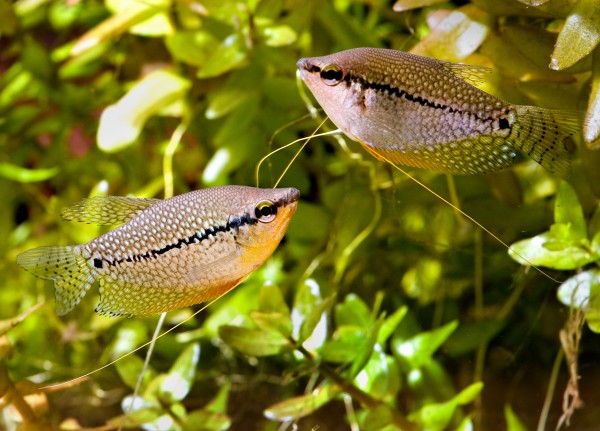
Credit: www.garnelio.de
Tips For Successful Pearl Gourami Care
When it comes to successful Pearl Gourami care, it is recommended to keep them in a group of four or more to see their natural behaviors. They are easy to care for and can be kept in a community tank with non-aggressive tank mates.
Additionally, regular water changes and algae maintenance are important for their well-being.
Providing Ample Hiding Places and Vegetation:
- Create a safe and comfortable environment for your Pearl Gouramis by adding plenty of hiding places, such as caves, driftwood, or plants.
- Dense vegetation, like floating plants or tall background plants, will make your Pearl Gouramis feel secure and mimic their natural habitat.
- Having hiding spots and vegetation will help to reduce stress in your fish, allowing them to thrive and exhibit their natural behaviors.
Observation and Recognizing Behavioral Cues:
- Take the time to observe your Pearl Gouramis regularly to understand their behavior and monitor their health.
- Watch for any changes in appetite, swimming patterns, or unusual behavior, as these can be indications of stress, illness, or poor water conditions.
- Make note of any aggressive behavior towards tank mates, as it may be a sign of territorial disputes or breeding activities.
Regular Monitoring of Water Quality and Parameters:
- Maintain a clean and stable aquatic environment for your Pearl Gouramis by monitoring water quality and parameters regularly.
- Test the pH, ammonia, nitrite, and nitrate levels to ensure they are within the appropriate range for your fish.
- Perform regular water changes to remove accumulated waste and toxins, ensuring a healthy and balanced ecosystem for your Pearl Gouramis.
Remember, providing ample hiding places and vegetation, observing behavioral cues, and regularly monitoring water quality and parameters are essential for successful Pearl Gourami care. By following these tips, you can create a thriving and harmonious environment for your fish to flourish.
Frequently Asked Questions Of Pearl Gourami Care
How Many Pearl Gouramis Should Be Kept Together?
Pearl Gouramis should be kept together in a group of around four or more for better socialization and natural behaviors.
Are Pearl Gouramis Easy To Care For?
Yes, Pearl Gouramis are easy to care for and are one of the hardiest and easiest gouramis to keep.
How Big Of A Tank Do You Need For A Pearl Gourami?
A Pearl Gourami needs a tank that is big enough to accommodate its size, at least 30 gallons.
Are Pearl Gouramis Good Community Fish?
Yes, Pearl Gouramis are good community fish. They can live peacefully with other non-aggressive fish.
Conclusion
Thrive when kept in groups of four or more. They are highly social animals, and by having a shoal of Pearl Gouramis, you can observe their natural behaviors more frequently. When it comes to tank mates, Pearl Gouramis are generally peaceful and can coexist with smaller or larger fish as long as their tank mates are not aggressive.
This makes them a popular choice for community aquariums. However, it is important to consider factors such as tank size, water parameters, and the behavior of other fish in order to maintain a harmonious environment. Pearl Gouramis are relatively easy to care for, as they are hardy and adaptable.
Regular tank maintenance, including water changes and algae cleaning, is essential to keep their tank clean and healthy. With their stunning appearance and calm temperament, Pearl Gouramis make a wonderful addition to any aquarium.
References:
American Society of Ichthyologists and Herpetologists (ASIH)
Aquarium and Tropical Fish Association (ATA)
Fédération Française d’Aquariophilie (FFA)
International Association for Aquatic Animal Medicine (IAAM)
National Aquarium Society (NAS)
Federation of British Aquatic Societies (FBAS)
Northeast Council of Aquarium Societies (NEC)
Federation of American Aquarium Societies (FAAS)
Please check other articles on this website, I have listed some of them here:
Everything You Need to Know About Caring for Blue Zebra Cichlids in Your Aquarium
Everything You Need to Know About Torch Coral: A Stunning Addition to Your Marine Aquarium
The Fascinating Penguin Tetra: Thayeria boehlkei (2023-24)
The Ultimate Guide to Scarlet Badis Care and Breeding
The Ultimate Bamboo Shrimp | Flower Shrimp Guide Which You Dont Want to Miss Out 2023
The Vibrant and Captivating Strawberry Peacock Cichlid: A Guide to Care and Maintenance
Electric Blue Acara: The Ultimate Guide To Care And Keeping
Best Fish for a 40 Gallon Tank: Top Choices for a Thriving Aquarium
Simple Guide to Easy-to-Care-for Aquarium Plants
Discover the Diverse Corydoras Catfish Varieties- A Guide
Get to Know Various Types of Algae Eaters
Master Guide: Best Water Parameters for Goldfish Care 2023-24
Mastering Black Ghost Knife Fish Care: A Comprehensive Guide
Optimal pH Levels for Tropical Fish: Essential Aquarium Guide
Discovering Freshwater Snail Species: An In-depth Guide
Expert Tips for Breeding Guppies: Keys to Successful Fishkeeping
Discover Peaceful Community Fish: Your Guide to Calm Aquatics
Ultimate Guide to Live Food for Betta Fish — Healthy Choices
Complete Guide to Your Perfect Cichlid Tank Setup
Your Guide to the Best Substrate for Planted Aquariums
Essential Guide to Discus Fish Care: Help Your Pets Thrive!
Grow Your Own Eden: Beginner-Friendly Aquascaping Plants Guide
Perfect Neon Tetra Tank Mates: Guide to Aquarium Harmony
Product Review of Eheim Classic vs Professional
The Ultimate Guide to Discus Fish Care
What Fish Can Live With Discus?
Ideal pH for Discus Fish | Aquarium Water Guide
How to Sex Discus Fish?: A Simple Guide for Hobbyists
Complete Discus Fish Tank Setup Guide
Can Discus Fish Live With Angelfish? The Complete Guide
Discus Diet Guide: What Do Discus Fish Eat?
Are Discus Fish Hard to Keep? Insights & Tips.
Optimal Discus Fish Water Parameters Guide
Discus Fish Size Guide 2024: How Big Do Discus Fish Get?
Ultimate Million Fish Guppy Care Guide 2024
Simple Guide to Easy-to-Care-for Aquarium Plants
Grow Your Own Eden: Beginner-Friendly Aquascaping Plants Guide
Hornwort Aquarium Plants: The Ultimate Guide to Care and Maintenance
Aquarium Equipment for Beginners: The Complete Checklist
Feeding Your Aquarium Fish: The Complete Guide
Common Beginner Fishkeeping Mistakes and How to Avoid Them!
Aquarium Plants for Beginners: Easy Care and Beautiful Options
Keeping Your Aquarium Water Clean and Healthy: The Complete Guide
Breeding Aquarium Fish: A Comprehensive Guide
Marine Aquariums: The Ultimate Challenge for Experienced Hobbyists
Tech in the Tank: Must-Have Gadgets for Aquarium Automation
Dwarf Sucking Catfish : The Ultimate Guide to Keeping and Caring for Oto Catfish
The Science of Aquarium Water Chemistry: Understanding pH, KH, and GH
Veiltail Goldfish: The Exquisite Beauty of Flowing Fins
Perfect Neon Tetra Tank Mates: Guide to Aquarium Harmony
Goldfish Care: Beyond the Bowl – Everything You Need to Know
Master Red Tail Shark Care: Tips, Tank Mates & Surprising Traits!
Sheepshead Wrasse Facts & Habitat Guide
Unveiling the Unique Asian Sheepshead Wrasse: A Fascinating Reef Fish with Quirky Behavior
Peacock Wrasse: A Dazzling Addition to Your Aquarium
Vibrant Wrasse Fish: Care Guide & Species Info
Bluestreak Cleaner Wrasse – Vibrant Reef Ally
Coris Wrasse Care Guide for Saltwater Aquariums
Melanurus Wrasse Care Guide & Habitat Tips
The Ultimate Guide to Kuhli Loach
The Ultimate Guide to Popular Loach Species for Freshwater Tanks
Yoyo Loach: The Ultimate Guide to This Fun and Friendly Fish
How to Care for Clown Loaches: The Ultimate Guide for Aquarium Lovers
Optimal Times to Feed Tropical Fish Daily
How to Care for Dojo Loach, the Friendly and Playful Aquarium Fish
How to Care for Zebra Loach: The Ultimate Guide for Beginners
Fu Manchu Lionfish: The Most Beautiful and Mysterious Fish in the Ocean?
The Ultimate Guide to Lionfish Sting: Symptoms, Treatment, and Prevention
Caring for Dwarf Lionfish: Tips & Facts
Hillstream Loach: The Ultimate Guide to Keeping These Unique Fish
The Complete Guide to Platy Fish: Care, Varieties, and Breeding Tips
Endlers Livebearers Care & Breeding Tips
Livebearer Species: The Ultimate Guide
Livebearers vs. Egglayers: Understanding Fish Reproduction
Rosy Barb Care 101: Tank Mates, Size, Breeding, Diet & More
The Complete Oranda Goldfish Care Guide: From Tank Setup, Feeding to Breeding
What Do Koi Fish Eat? Optimal Diet Tips
Koi Fish Lifespan: Facts & Tips Unveiled
Koi Fish Prices: How Much Do Koi Fish Cost?
Unveiling Koi Fish Sizes: How Big Do Koi Fish Get?
Exploring Types of Koi Fish for Your Pond
Butterfly Koi Fish Care Tips and Habitat Guide
Can You Eat Koi Fish? Unveiling the Facts
Top 10 Fish for a Planted Aquarium, everything you need to know
I am a passionate aquarist with over 30 years of hands-on experience in fishkeeping. My journey began at a young age, collecting fish from the wild and learning through experimentation. Specializing in tropical fish, I bring a deep understanding of the hobby to FishKeepingMadeSimple. The site provides honest, detailed reviews of essential products and accessories to help fellow enthusiasts create the best environments for their fish.

